Art Tools of Darman Angir
It's great to have Indonesian architect and sketcher Darman Angir for this interview. Check out his art on Flickr page and his Facebook page
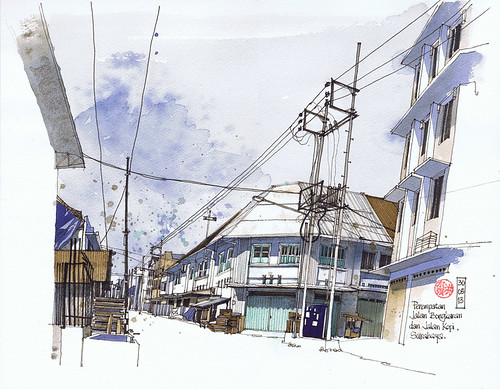
Qn: Can you give us an introduction of yourself to our readers? And what do you do for a living?
I'm a self employed architect of 20 years practice. I started sketching in November 2011 around the same time as my wife's pregnancy.
When I was graduated, I sketched for about 2 years (1994-1996), then hibernated from sketching almost 15 years.
Starting sketching can't be more exciting after those long non-active years.
Qn: Can you give us a rundown of the pens you use in this picture? Are they your more commonly used pens?
- Rotring artpen EF and Broad.
- Hero 578 fude nib.
- Sailor Fude nib pen, 40 and 55 degree nib slant.
- Rotring rapidograph. 0.3 and 0.8
- Pilot eye dropper fountain pen.
- Lamy safary. EF and F nibs.
- Pilot scribe calligraphy pen.
- Hero 330 and 332.
- Pilot 78G medium and Pilot paralel pen 0.38.
- Sailor (?) Preppy pen bonus of noodler's ink 4.5 oz bottle.
- Platinum carbon desk pen extra fine.
- Noodler's Ahab flex pen.
#1 one of my oldest sketching pens, very stiff nib, nice for fine lines (EF nib)
#3 mostly for just ink drawings, because of the special Fude nib
#5 for sketching ink lines and watercolour wash
#6 generic sketcher fountain pen, very versatile for various sketching techniques
#10 for traveling, because of huge ink capacity as eye dropper
Qn: These pens look good. There's sculpting in the nibs. What are these pens?
These are HERO Fude nibs pens, namely M-86 and 169. These has stiff Fude nib compared to sailor Fude nib pen (previous picture no.3).
Fude nibs are specially designed to produce various ink line thickness by the difference of writing angles.

Qn: That's a fancy looking dip pen on the right. What's that?
That's Murano glass pen of Venice. In this photo, the glass part is just aesthetic in pen design. I have another Murano glass pen that all made of glass, including the nib. they are nice & exquisite for writing, but too risky for sketching.
Qn: So do these nibs go with that dip pen above?
Yes, it can, but it can also be put on wooden nib holder like in the most left photo.
But those nibs in the tackle compartment are mostly calligraphy nibs. it is one of my hobby.
Qn: Which are your favourite pens? Why?
For sketching I always use my fountain pens as described in my rundown (your 2nd question). I use dip pens for calligraphy.

Qn: How about these? Are they ruling pens? What are they used for?
These are ruling pens, I use them them. I bought them from the art material store's closing clearance at a very cheap price.
They are used for adding liquid masking fluid or some gouache highlight on my watercolours.
Qn: These are interesting cases. What are they?
They are cigar's boxes, from my friends. I modified them by adding paper compartments to accommodate pens. Very nice isn't it? =)
Qn: Why do you have so many ink bottles? Which one is your favourite ink?
My town only sell the 2 inks on the left. So I bought the others when I'm going abroad, and online.
It seems too many for some, but they are far more superior quality compared to the ink that is sold in my town.
Another reason is they have different colours, so I can intermix them to make new colours.
My favourites are Noodler's ink lexington grey and Platinum carbon ink.
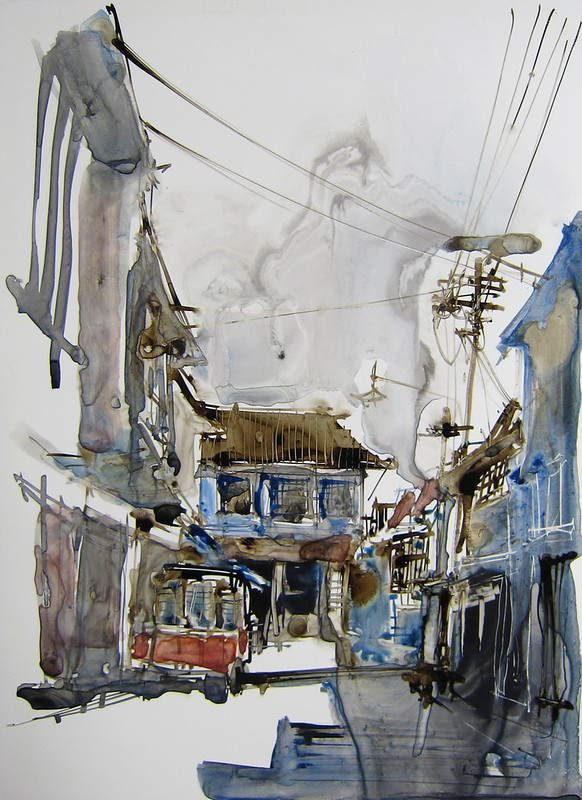
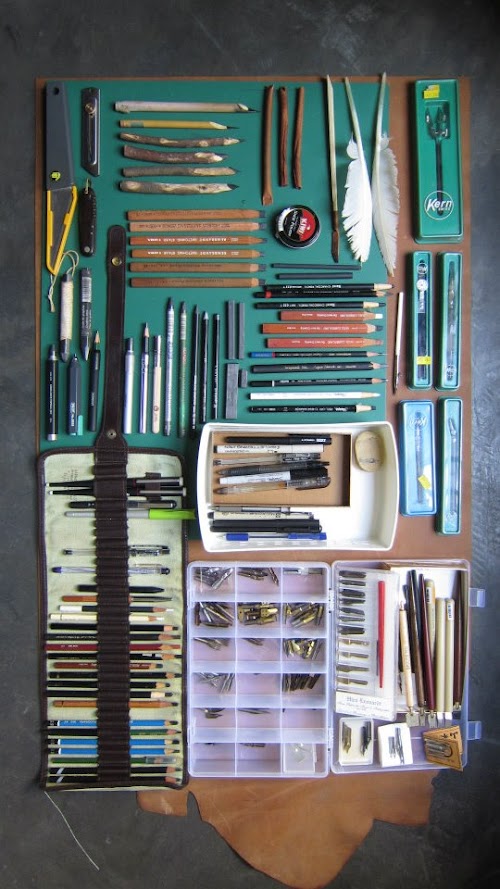
Qn: Wow. That's a lot of tools! It will take days to cover all the items. Can you pick a few interesting items to talk about from this picture?
One of my interest lately is experimenting with twigs, quills, bones, etc, which i got inspired by the works of Ch'ng Kiah Kiean.
I crafted my own experimental sketching tools using the knives in the far upper left.
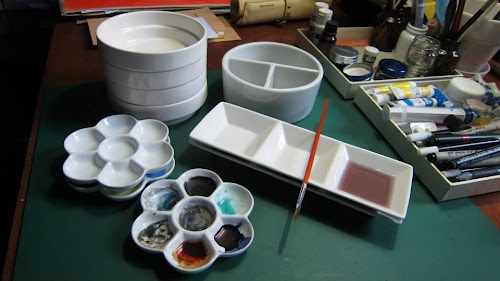
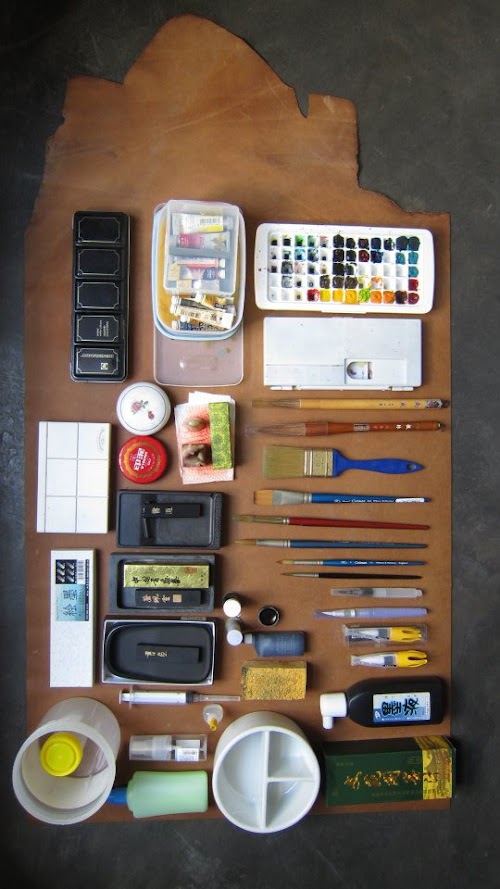
Qn: These look like your watercolour sets. What brand do you use? Looks like tube paints.
Actually these are my tools for water-based media sketching. Mostly I use Winsor and Newton, Grumbacher.
Qn: What are those three black items in between all the circular stuff? Ink pads? They look like the items in this picture below:
Those are ink stones (in japanese: suzuri), used for grinding ink sticks. They are eastern calligraphy material, but I use them with my dip pens for western calligraphy.
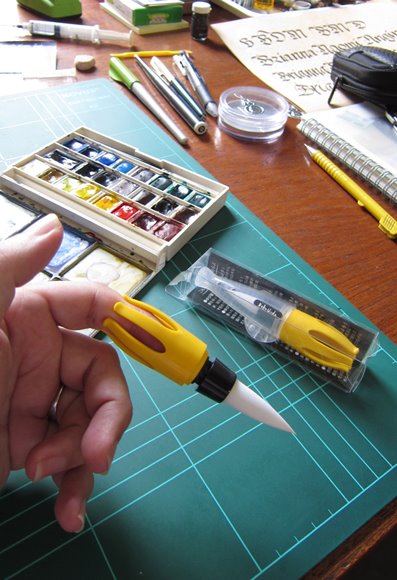
Qn: A finger brush? How does it compare to normal brushes? Why buy a finger brush? And where did you buy them? What's the brand?
Finger brush is funny to use. It is very awkward brush, I bought it in Nara, Japan. It's just as a novelty. The brand is Popcorn Yubi Fude



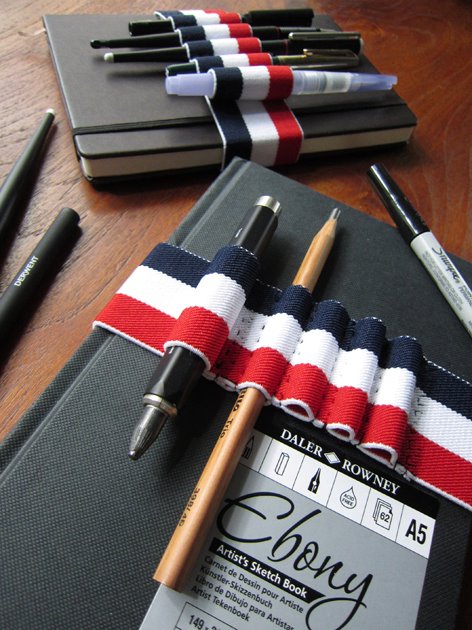
Qn: I read that you sewn those bands yourself. Are they helpful?
Very helpful indeed. But those 5 to 6 slots is never enough for urban sketcher.
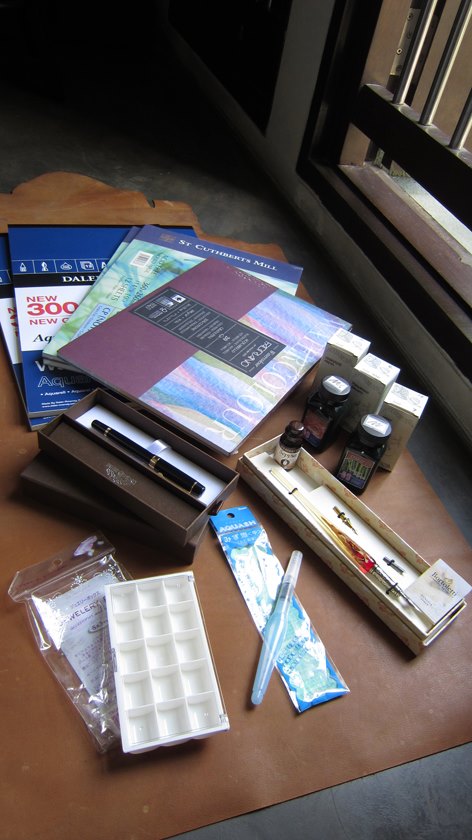
Qn: What watercolour paper do you use?
Mostly I use Canson C-grain 200 GSM, which is not watercolour paper. that's the only one that's available in my local store. After that is Montval 300 GSM, which I bought mostly from Singapore.
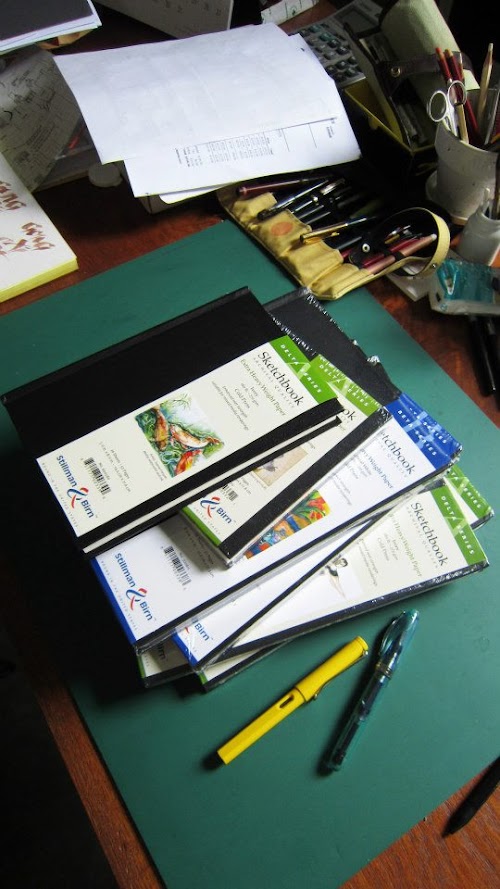
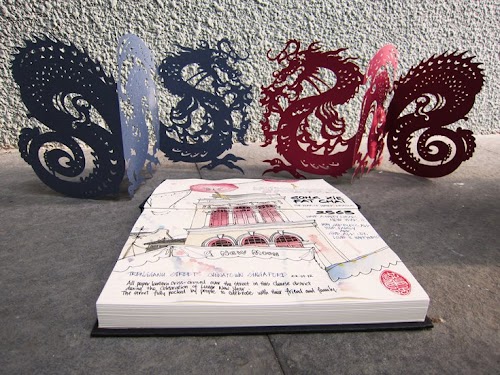
Qn: What sketchbooks do you use?
Daler Rowney Ebony sketch book, in the picture above are Stillman & Birn sketch books that I haven't opened yet.
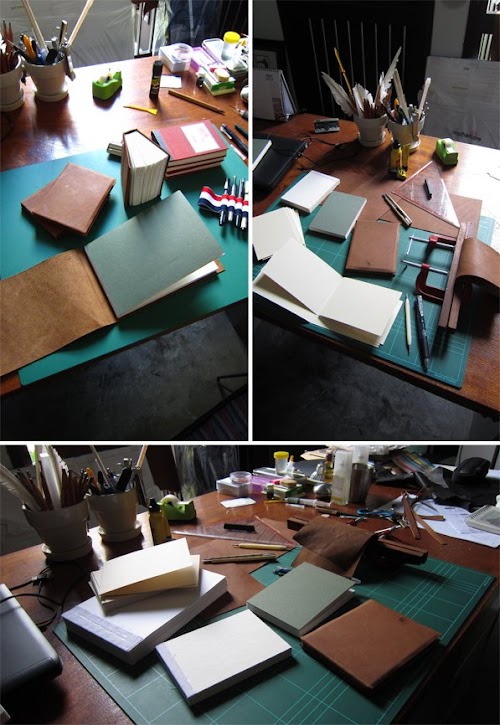

Qn: Are these self made sketchbooks? Why did you make them?
Yes, as I described before, my town has limited art material store & supply, so I cut and bind some sketch books myself.
The papers: Canson C-grain, Montval, lithographic papers, craft papers, etc.
It's liberating for me to choose the size and the kind of papers for my sketch book.
The cover made of genuine leather/cow hide.
Qn: Can you talk about your setup above?
This is my generic set up for sketching on location. Modified tripod with wood laminated flooring waste as tray for my tools. I use 16mm Multiplex as drawing board and folding fishing stool.
Main parameter: all can be carried in my backpack.
Qn: Which artists do you think we should feature next?
Ch'ng Kiah Kiean, James Richards, Pochou Chang.
That's all from Darman Angir. Thanks!
Check out his art on Flickr page and his Facebook page
Items mentioned may be available at Amazon.com and Amazon.co.uk


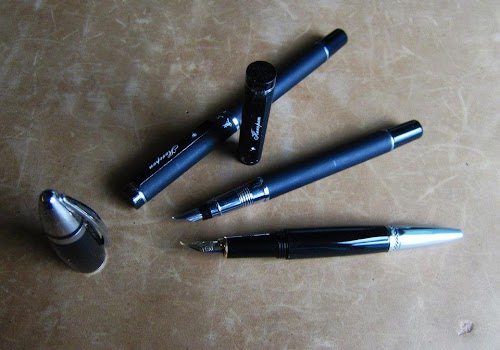
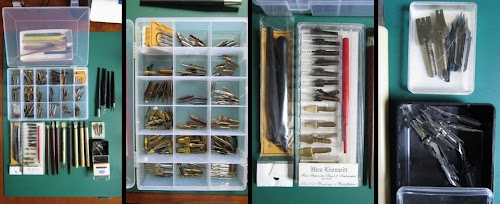



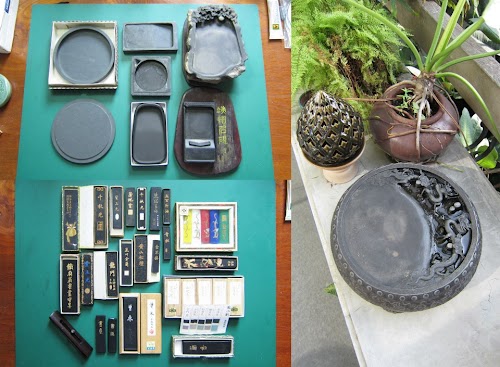


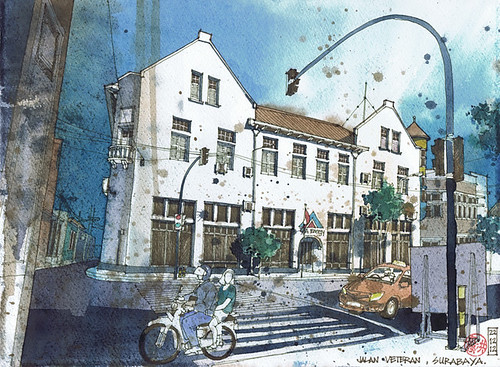


Add new comment